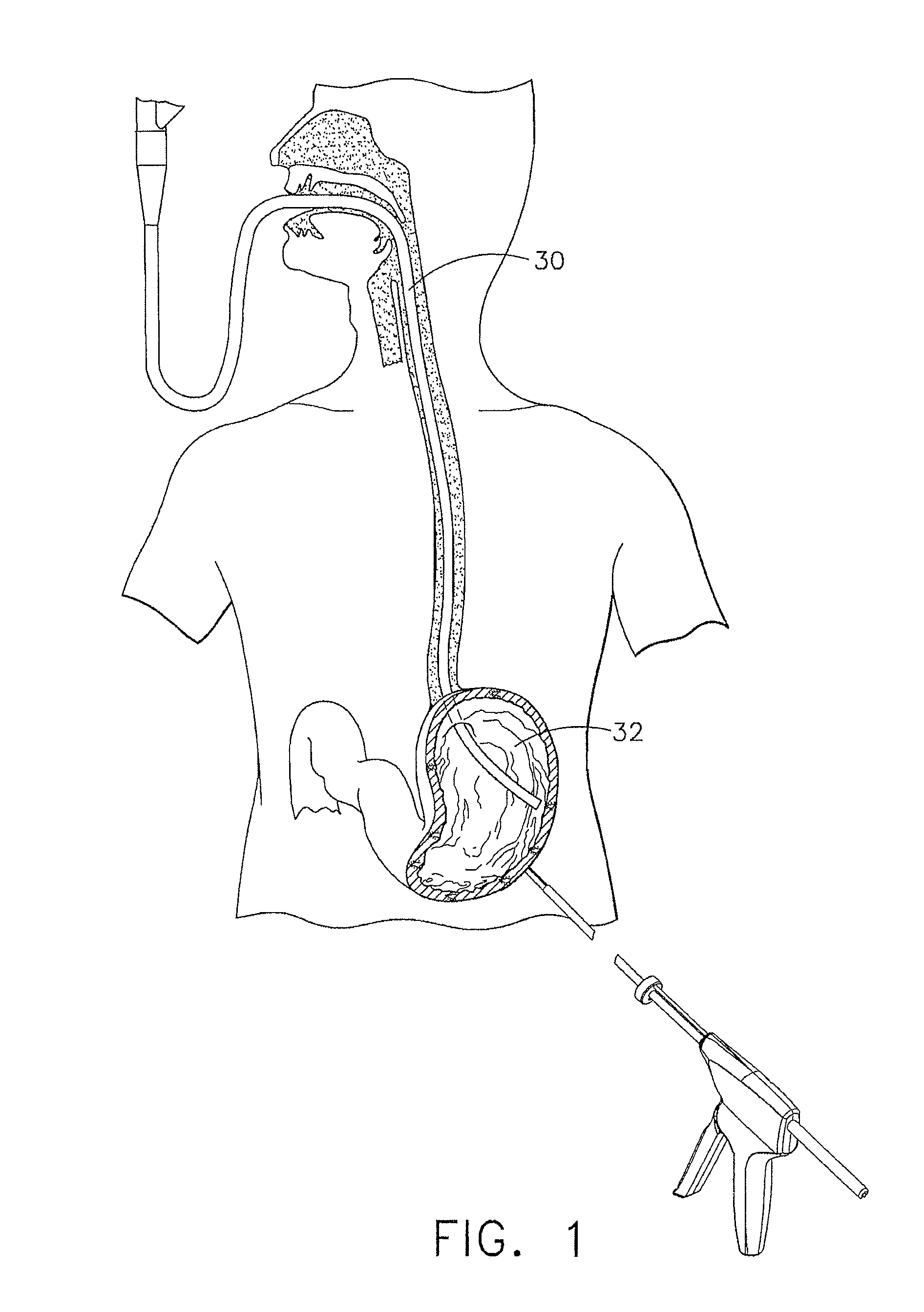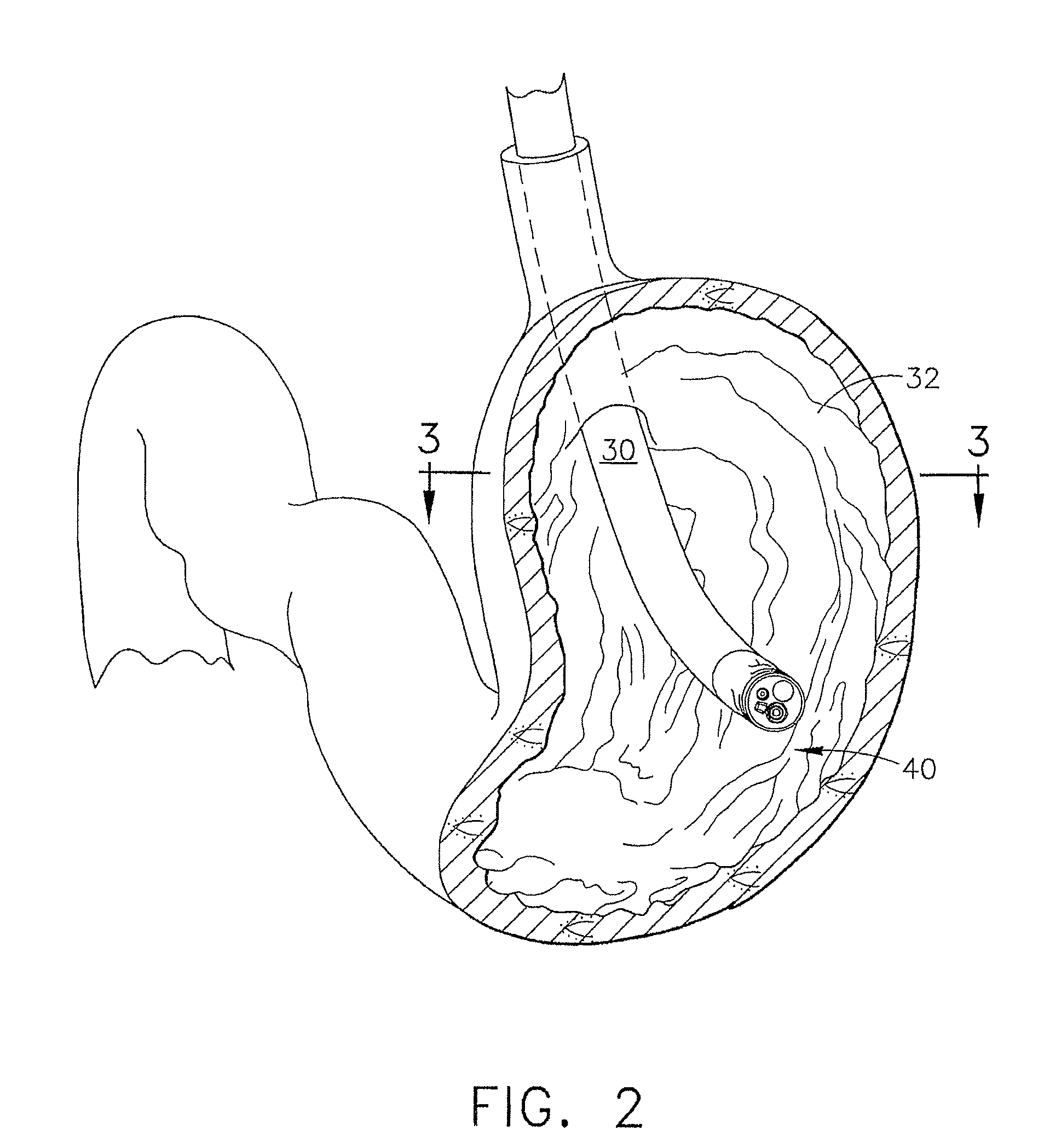Device for insufflating the interior of a gastric cavity of a patient
a technology for insufflation and gastric cavity, applied in the field of gastric reduction, can solve the problems of affecting the personal quality of life of individuals, contributing significantly to morbidity and mortality, and high risk of associated health problems, and achieve the effect of preventing insufflation of the small bowel
- Summary
- Abstract
- Description
- Claims
- Application Information
AI Technical Summary
Benefits of technology
Problems solved by technology
Method used
Image
Examples
Embodiment Construction
[0078]The detailed embodiments of the present invention are disclosed herein. It should be understood, however, that the disclosed embodiments are merely exemplary of the invention, which may be embodied in various forms. Therefore, the details disclosed herein are not to be interpreted as limiting, but merely as a basis for teaching one skilled in the art how to make and / or use the invention.
[0079]Referring now to the figures, in which like numerals indicate like elements throughout the views, FIG. 1 is a diagrammatic view of a patient during a hybrid endoscopic-laparoscopic procedure. As used in the present specification, the term endoscopic is intended to refer to medical procedures in which the body is accessed through a natural orifice (for example, transorally) and the term laparoscopic is intended to refer to medical procedures wherein a surgically created open (for example, as created with a trocar) is employed in accessing the body. In the method of the present invention, s...
PUM
 Login to View More
Login to View More Abstract
Description
Claims
Application Information
 Login to View More
Login to View More - R&D
- Intellectual Property
- Life Sciences
- Materials
- Tech Scout
- Unparalleled Data Quality
- Higher Quality Content
- 60% Fewer Hallucinations
Browse by: Latest US Patents, China's latest patents, Technical Efficacy Thesaurus, Application Domain, Technology Topic, Popular Technical Reports.
© 2025 PatSnap. All rights reserved.Legal|Privacy policy|Modern Slavery Act Transparency Statement|Sitemap|About US| Contact US: help@patsnap.com



